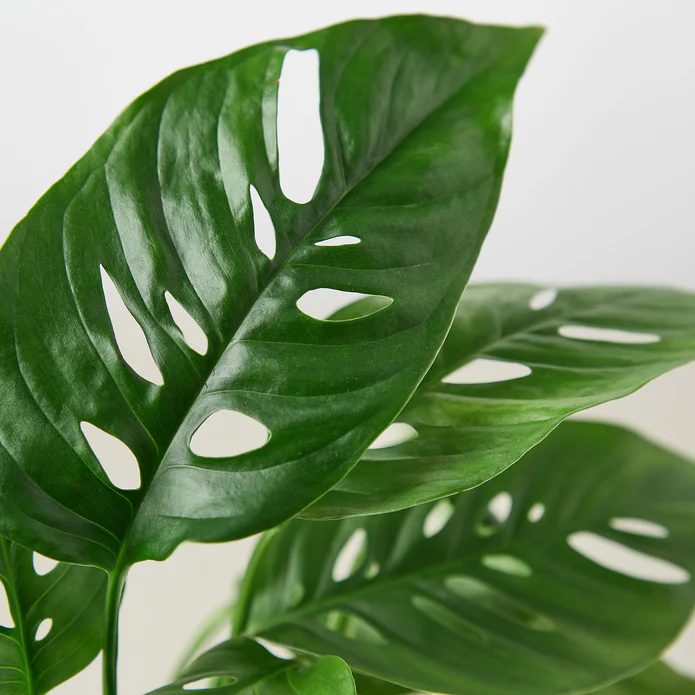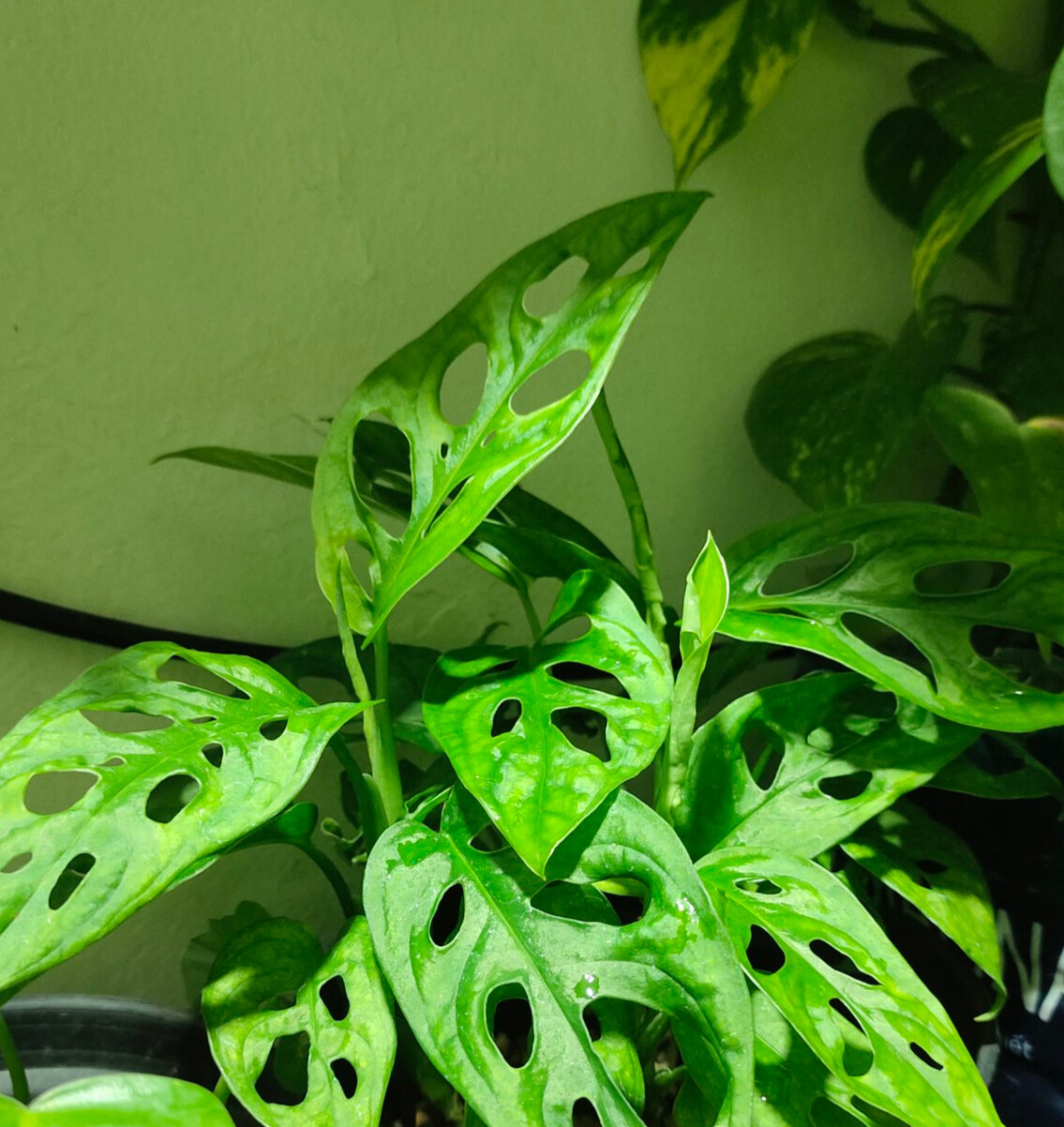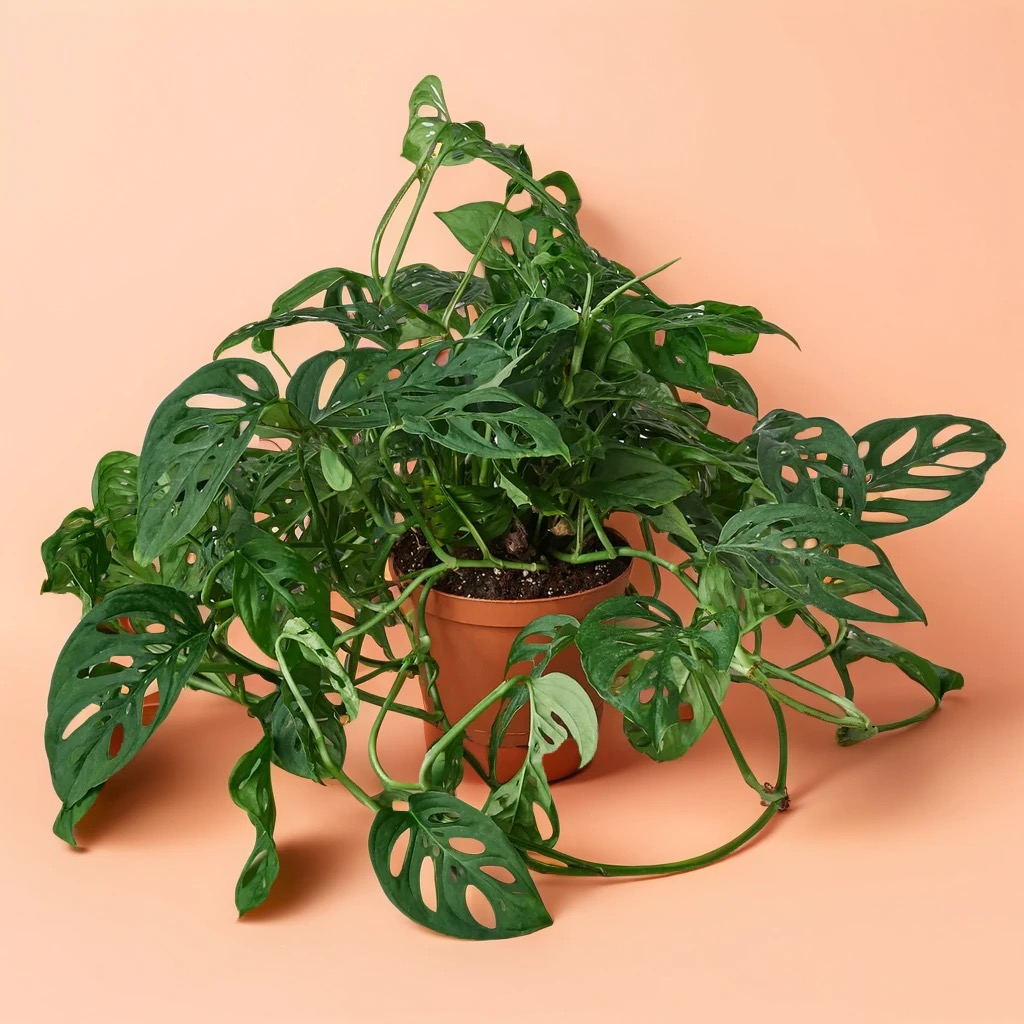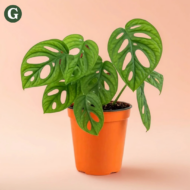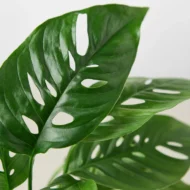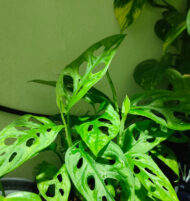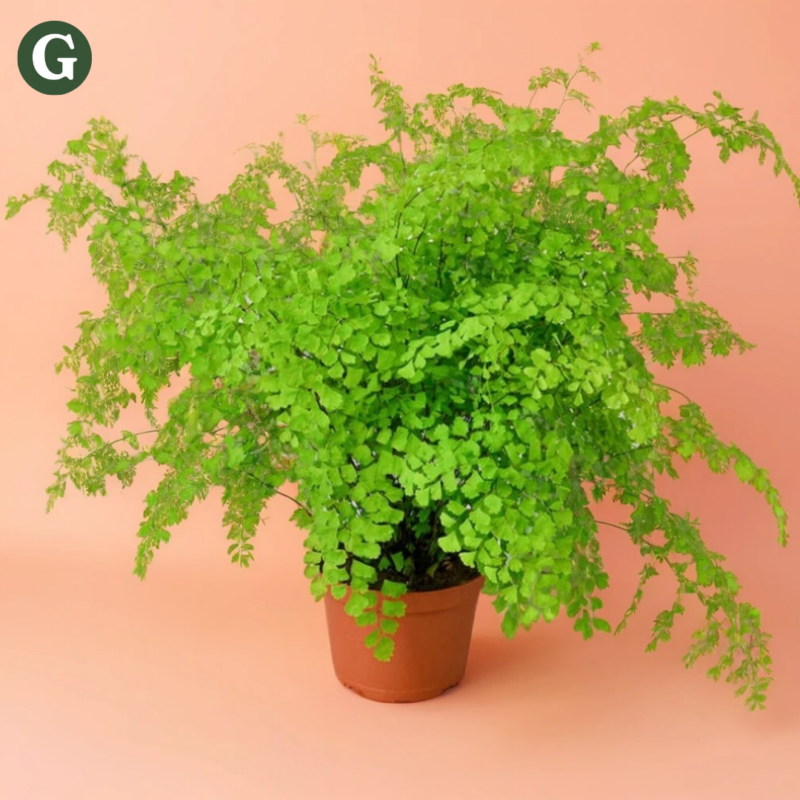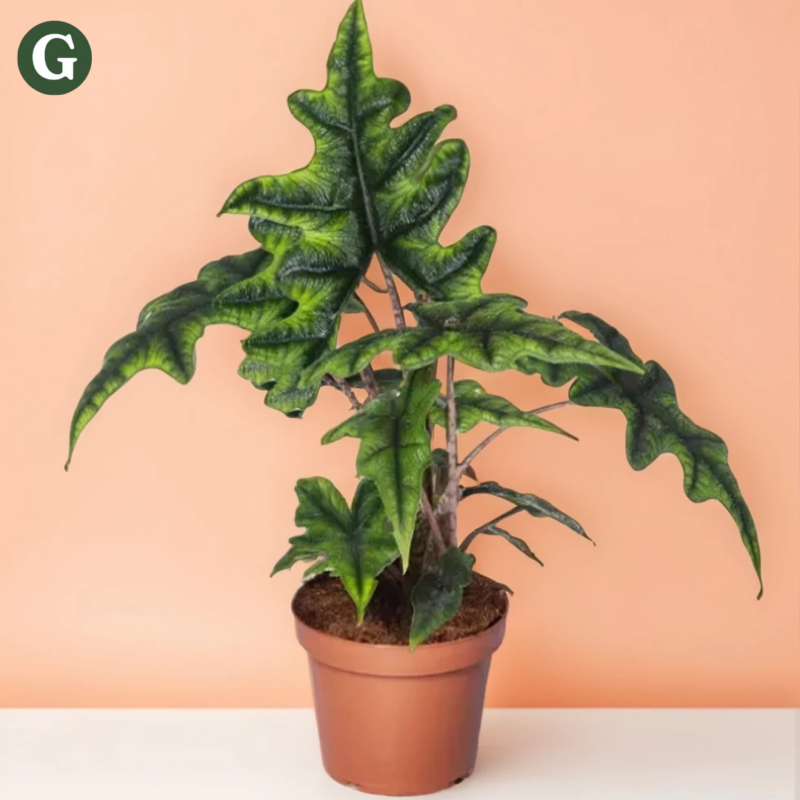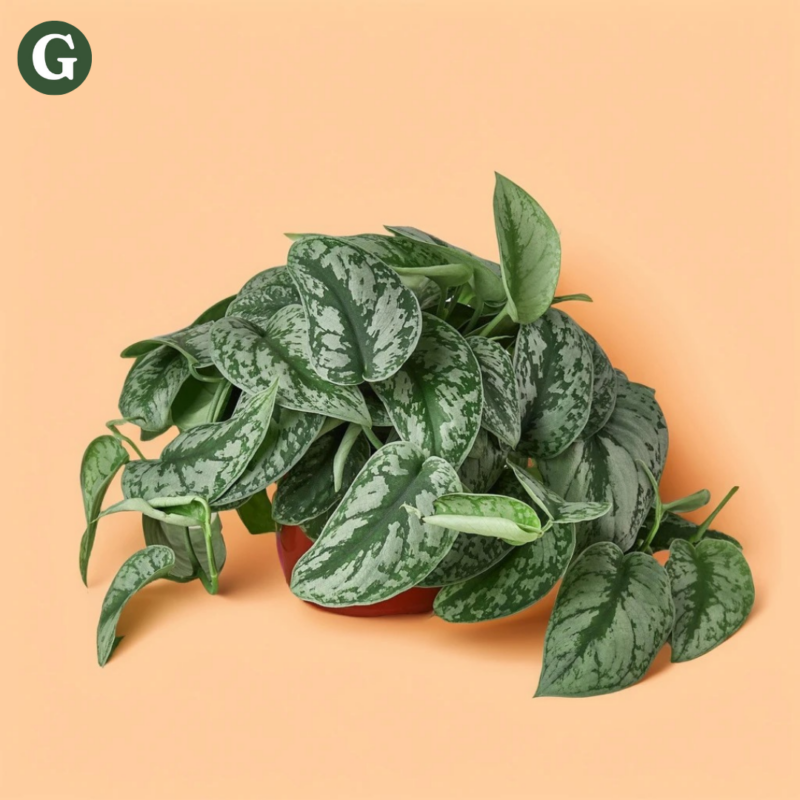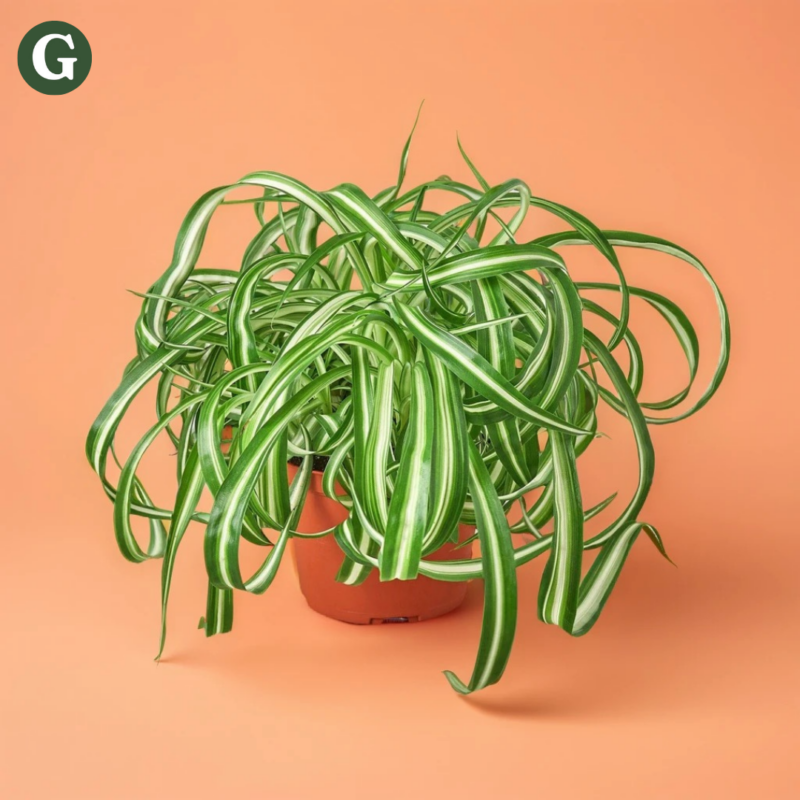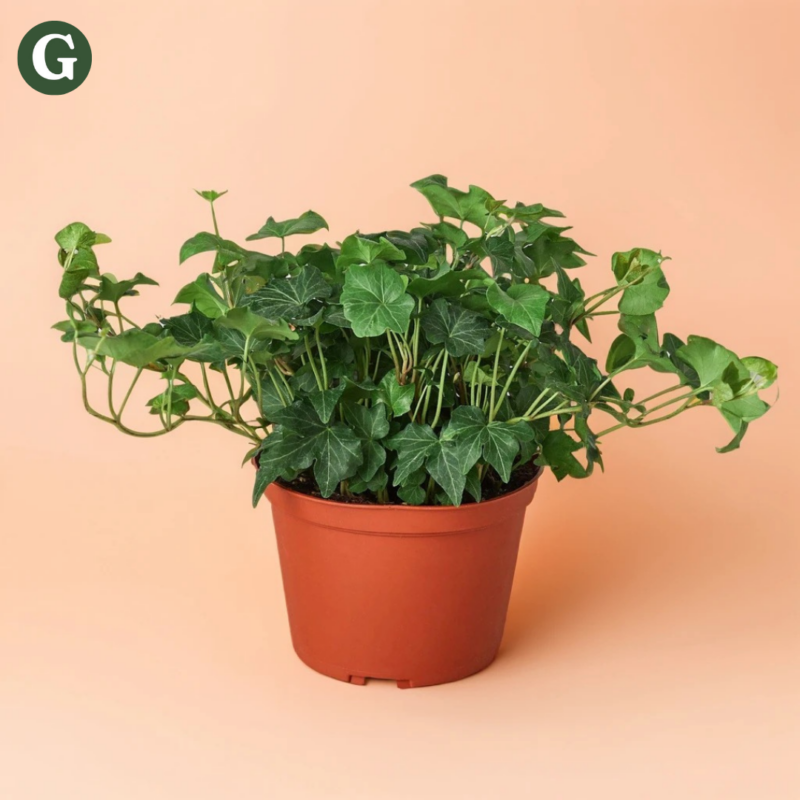Monstera Adansonii
Botanical Name: Monstera adansonii
Common Name(s): Swiss Cheese Vine, Monkey Mask Monstera
Monstera adansonii, often referred to as the Swiss Cheese Vine, is prized for its distinctive, fenestrated leaves with oval-shaped holes. This vining plant is native to Central and South America and is highly popular as a houseplant due to its unique leaf pattern and ease of care. Typically, it grows well in hanging baskets or as a climbing plant on a moss pole, adding a tropical feel to any space.
Swiss Cheese Plants thrive in bright, indirect light, which encourages faster growth and more pronounced fenestrations, though they can tolerate lower light levels with slower growth. They prefer well-draining soil that stays slightly moist, so it's best to water when the top inch of soil feels dry. High humidity levels are ideal, though the plant can adapt to average indoor humidity.
Air Purifying Qualities: Like other Monsteras, Monstera adansonii has air-purifying properties, helping to remove toxins like formaldehyde and benzene from the air. Its foliage contributes to creating a fresher indoor environment by absorbing carbon dioxide and releasing oxygen.
Note: Monstera adansonii is mildly toxic if ingested due to calcium oxalate crystals, which can cause irritation. It’s best to keep this plant out of reach of pets and small children to ensure safety.
Care Insights & Expert Tips
- Support and Growth Pattern: As a climbing plant, it benefits from a moss pole or trellis, which will allow the plant to produce larger leaves with more pronounced fenestrations.
- Fertilizing Details: Use a balanced, diluted liquid fertilizer every 4-6 weeks in spring and summer. Avoid fertilizing in winter when growth slows. Too much fertilizer can lead to salt buildup, so flush the soil every few months.
- Pruning Techniques: Trim any yellow, damaged, or overly long vines to encourage a bushier shape. Clean pruning shears with rubbing alcohol before and after pruning to prevent disease spread.
- Pest Management: Regularly inspect for pests like spider mites, scale, and mealybugs, which are attracted to the large leaves. Wipe the leaves with a damp cloth once a month and treat any infestations with neem oil or insecticidal soap. Spider mites, in particular, thrive in dry environments, so keeping humidity high can prevent them.

Visit our plant care library
Find essential tips to keep your plants thriving, vibrant, and healthy.

